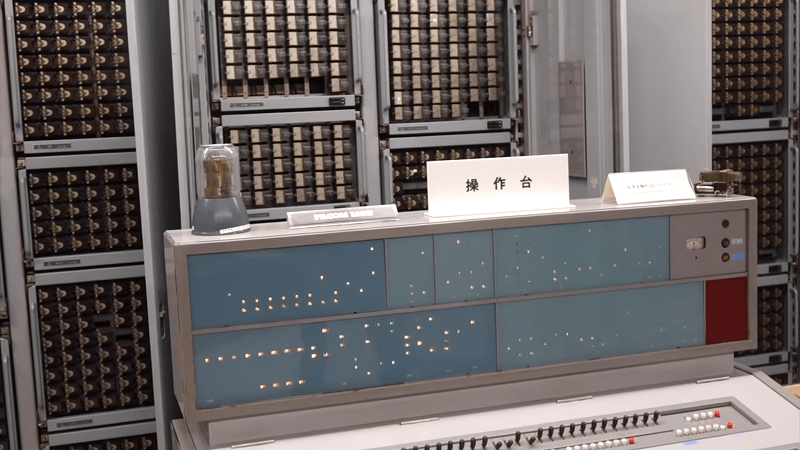If you study the history of computing you might have heard of the FACOM 128B, a Japanese relay computer from 1958. It holds the distinction of being a contender for the oldest computer that still works in its original form, as it resides in a Fujitsu building in Numazu Japan. [CuriousMarc] visited the old computer and created a video about it as well as painting a picture of other contemporary machines. You can see the video below.
[Marc] explains how a relay machine was already behind the times in 1958, and also shows how the 5,000 relay machine is laid out. The machine on display came from a Tokyo university and did the kind of computations you might use a computer for today to do engineering design.
Watching — and hearing — the beast run a program to add three and three is very illustrative. The keyboards reminded us of old adding machines. The machine uses floating point or bi-quinary that stores each digit as 7 bits. This led to a wide word width but made it simple to see when a relay got stuck since each number had two parts and only one relay was on in each part for any number.
The video isn’t just a home movie of the visit but shows how the operator entered data and instructions along with how to read the output display. The machine had 180 words of memory that took several cabinets. That works out to about 13K of memory. That was still enough to set up the solution for a 5×5 matrix inversion. We were amused to see that a program loop was literally a loop of punched tape.
We like flying a jet plane but are nostalgic for airships. By the same token, we kind of wish our desktop computer used relays like this. We’d probably be pretty unhappy if either of those were really true. Then again, we have seen a single board relay computer recently.
We’ve actually seen this computer in an earlier post. There we noted the computer was asynchronous, something that would be unusual in a modern CPU.
















It’s great that there are people who care and mantain this machine and people who make a video (like this one) about it. Interesting history and technology. Regarding the article, the 13K is a bit misleading, the careless reader might assume 13kB (kilobyte) but actually it 13kb (kilobit) which is still impressive.
I loved the lineprinters in action, interesting tech, seems nonsense to do it like this today, but then it made very much sense.
Thanks for posting
When a nuclear war kicks off this thing will keep crunching the numbers.
Of course you mean “another” nuclear war.
The question is: will Keith Richards be trained to use it?
Awesome video. There is a lot of charm in these old computers.
Not mentioned –
At 250kW you need massive mains supply cables and a lot of air conditioning power to prevent it cooking workers.
As the final PSU output voltage is very low, the secondary supply current is so high that distribution is done with massive copper bars as any form of wire it too thin.
I really like that comment in the video (approx 15:15) where he exclaims that 180 words is “tons of memory”. Yep, tons alright!
Excellent ! It really was a pleasure to watch the video !
Operating in 1951, still operating at a wonderful museum https://www.tnmoc.org/witch
Go there; the staff are able and willing to whip out computers’ schematicsmand discuss them with you :)
Fascinating video! I really enjoyed it.
On the biquinary encoding… I’d never seen that before in the context of computing, but it does remind me a lot of my grade school classes with an abacus.